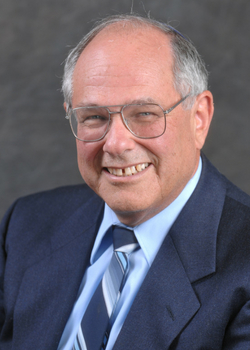I have a Ph.D. in philosophy from a philosophy department that espoused analytic philosophy, which focuses on the meaning of words. I am therefore probably the last person you know who would tell you to ignore the words of Yom Kippur – the words of the liturgy and the words spoken in sermons during the day. Words bear meaning, and the words of the Yom Kippur liturgy are especially graphic in describing the brevity and weakness of our lives, the lack of control that we have over much of what happens to us, and yet the great responsibility that we have for what we think, feel, and, especially, do. Undoubtedly, on Yom Kippur more than any other day of the year, rabbis strive to match the seriousness of the liturgy with the importance of their message. So by all means, do pay attention to the words of Yom Kippur.
But music also conveys meaning. The exact same words sung to different melodies or at a different cadence can mean completely different things. Cantor Judy Dubin Aranoff taught me that the Kaddish is traditionally sung to nineteen different melodies throughout the Jewish year, and listening to her sing the exact same words in different melodies and beats did indeed make them feel very different and thereby convey very different meanings, even though the words, if translated, would mean the exact same thing each time. The Kaddish is sung to several different tunes at different times on Yom Kippur, so listen for that and ask yourself what the music is trying to say to you.
For me, though, the Aleynu prayer is the best example of how music conveys meaning. That prayer began as part of the Malkhiyot section of the Rosh Hashanah liturgy, the section that focuses on God’s sovereignty, because it asserts that we have a duty (aleynu l-) to praise God who created the world and taught us Jews our distinctive way of living (the first paragraph) and who, we hope, will teach that to the rest of the world so that all human beings understand that they must live with the recognition that only God is sovereign (not money, idols, etc.). The prayer is attributed to Rav, who lived in the third century, but there is some controversy among scholars as to whether that is accurate. In any case, during the Middle Ages the practice became to end every morning, afternoon, and evening service with the Aleynu prayer. During the year, the melody to which it is sung hugs the melodic line. In contrast, during the High Holy Days, the melody to which it is sung skips octaves. I want to suggest that that is not an accident, for most of the year we feel God’s immanence – that God is with and among us – but on the High Holy Days, the Days of Awe, we feel God’s transcendence – that God is far above and beyond us and different in kind from us (in that sense, kadosh, holy). By hugging the melodic line during the year, the music articulates God’s immanence, and by skipping octaves on the Days of Awe, the music draws attention to God’s transcendence.
The same is true for the iconic music of Kol Nidre. It too skips octaves. Its minor key adds to the transcendent feel of God, for it expresses our sense of fear and awe before the One who will judge us on this day, knowing, as we inevitably do, that in the past year we have not lived up to all that God would want us to be in our interactions with each other and with God.
So this Yom Kippur by all means pay close attention to the words of the liturgy and the sermons, but also pay attention to the music. Both the words and the music will hopefully make the Day of Atonement the cleansing moral experience in the face of a transcendent God that Yom Kippur is intended to be. G’mar hatimah tovah.

